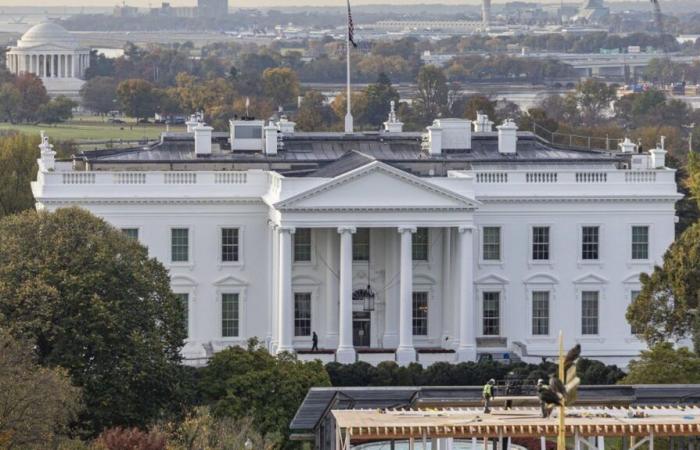The Republican Party candidate won the presidential election against Kamala Harris on Wednesday, but he still has several steps to take before settling back into the White House.
No, Donald Trump is not yet president of the United States. Not officially, at least. The presidential election on Tuesday, November 5 certainly allowed the Republican candidate to be re-elected for a new four-year term, but he still has a few procedural steps to complete before he can return to his quarters at the White House. At the same time, a long work begins to be ready on D-Day. Franceinfo presents the calendar for the coming months.
From now on: an uncertain presidential transition
Donald Trump will not officially become president until January, but his teams will already prepare for their champion to take office. A transition period of two and a half months begins, during which departing managers are supposed to transmit a quantity of files and confidential information to the new arrivals.
In 2016, Donald Trump was received by Barack Obama at the White House on November 10. In 2020, on the other hand, Joe Biden was entitled to a much more eventful transition, which only began on November 23, without reception by Donald Trump. The president-elect denounced information retention operations on the part of the outgoing administration.
By December 11: certification of results in each state
Unlike the electoral system in force in most democracies, American citizens do not directly appoint their head of state. Once the vote has been counted, each State has the obligation to issue before December 11 a document certifying the results of the vote in its area. Since 1877, the law has left states five weeks between the vote of citizens and that of the electors, in order to be able to resolve all electoral disputes and recount the votes in the event of a dispute, recalls The World.
The certification document must, among other things, contain the number of votes received by each candidate, but also designate the electors, who then vote to confirm the choice of American citizens.
Often unknown to the general public, the electors are designated by each political party during the months preceding the election and under conditions which vary according to the States. Each state is allocated a certain number based on its population. For example, there are 54 electoral votes for California and 6 for Kansas.
December 17: vote of the electors
The electors designated at the end of the ballot will meet to nominate the next President of the United States during the “first Tuesday following the second Wednesday in December”recalls the law school of Cornell University – this year, on December 17. This second ballot has above all a symbolic value, because the vast majority of states (except Maine and Nebraska) operate according to the system of “winner takes all” (winner takes all): the electors of a state vote for the candidate who came first, even if he won by only one vote. Donald Trump’s victory is therefore assured. The certificates from each state, which will count these votes of the electors, must be transmitted to the federal authorities before December 25.
January 3: first meeting of the Congress
After each presidential election, both houses of the US Congress meet on January 3 – unless another date was chosen by the previous assembly. The face of this Congress will change, since the entire House of Representatives (the Assembly) has been renewed, as have a third of the members of the Senate. Usually, the House of Representatives begins by choosing its president or speaker.
January 6: counting of the votes of the electors
With all the pieces in place, the newly reunited Congress will be able to officially proclaim the votes of the electors of each state and therefore the official result of the presidential election. To avoid any challenge similar to that of Donald Trump supporters in January 2021, a law passed in 2022 specifies that the President of the Senate (who oversees the event) “has no power to determine, accept, reject” or otherwise change the result of that vote.
January 20: inauguration of the new president of the United States
As tradition dictates, “Inauguration Day” takes place on January 20. During this inauguration ceremony, which takes place in front of hundreds of thousands of people in Washington, on the steps of the Capitol, seat of Congress, Donald Trump must take the oath, one hand on the Bible. The text does not vary: “I do solemnly swear that I will faithfully execute the office of President of the United States and to the best of my ability preserve, protect and defend the Constitution of the United States.”. Four years ago, Donald Trump did not attend the inauguration of his successor, Joe Biden.
Once invested, the Republican president can regain possession of the Oval Office, from where he should sign the first decrees of his new mandate. In 2016, he signed a document aimed at slowing down the implementation of his predecessor’s “Obamacare” health reform. On his first day in 2020, Joe Biden signed a first series of decrees, including the return of the United States to the Paris climate agreement. In 2025, Donald Trump has already made it known that he intends in particular “close the border” to limit immigration and “liners” to produce more and more gas.






